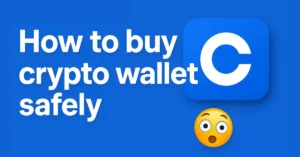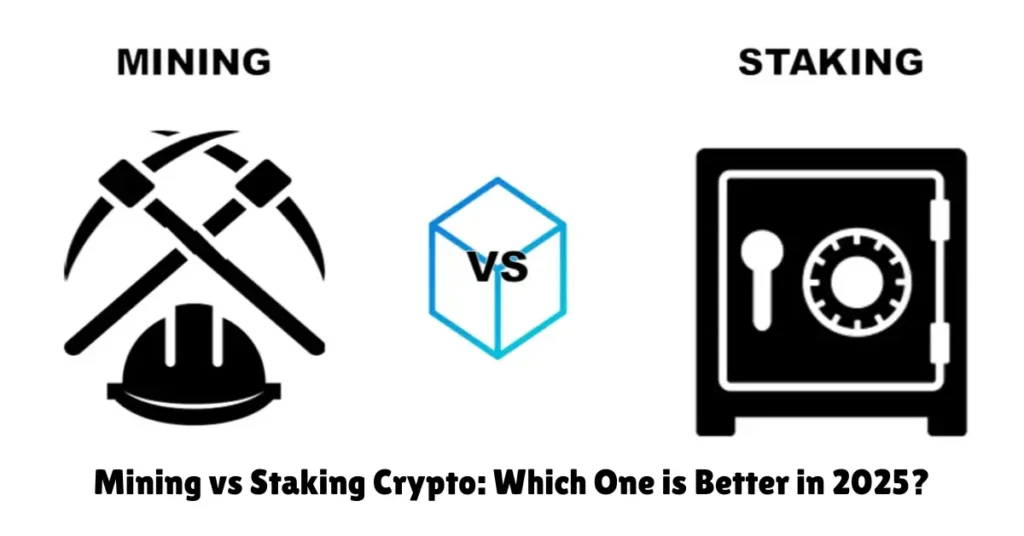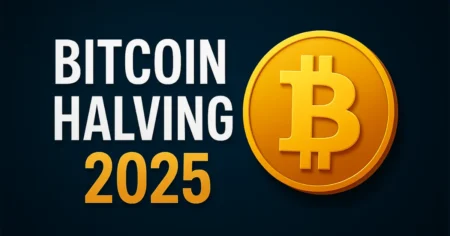Learn mining vs staking crypto:
Introduction
Cryptocurrency has changed the way we think about money, investing, and even technology. But have you ever wondered how these digital currencies work behind the scenes? How do they stay secure, and who verifies the transactions?
That’s where mining and staking come in.
These are two different methods used to keep cryptocurrencies running smoothly and securely. While both play a vital role in supporting blockchain networks, they work in very different ways. Whether you’re a beginner trying to understand crypto basics or someone looking to invest, knowing the difference between mining and staking can help you make smarter decisions.
In this blog, we’ll break down what mining and staking mean, how they work, and which one might be better for you.
What is Crypto Mining?
Crypto mining is the process of verifying and adding new transactions to a blockchain network, like Bitcoin. It’s called “mining” because it involves using powerful computers to solve complex math problems, and in return, miners earn rewards usually in the form of cryptocurrency.
This method works on a system called Proof of Work (PoW). The first miner to solve the puzzle gets to add a new block of transactions to the blockchain and earn some coins. But it’s not easy—it requires expensive equipment, a lot of electricity, and technical knowledge.
Key Points:
- Runs on Proof of Work (PoW)
- Requires high-powered computers
- Miners compete to solve puzzles
- Rewards: New coins + transaction fees
- Example: Bitcoin, Litecoin
What is Crypto Staking?
Crypto staking is a more energy-efficient way to help run a blockchain. Instead of using computers to solve puzzles, users “stake” or lock up their crypto coins to support the network and validate transactions.
Staking is based on a system called Proof of Stake (PoS). The more coins you stake, the higher your chances of being selected to validate the next block of transactions. In return, you earn rewards, just like with mining.
The big advantage? You don’t need expensive hardware or high electricity bills. Staking can often be done directly from your crypto wallet or through exchanges.
Key Points:
- Runs on Proof of Stake (PoS)
- Involves locking your coins
- You help validate transactions
- Rewards: More coins (staking rewards)
- Example: Ethereum 2.0, Cardano, Solana
How Does Mining Work?
Mining is a process used by cryptocurrencies like Bitcoin that follow the Proof of Work (PoW) system. Here’s how it works:
Validating Transactions
- Miners use powerful computers to verify and add new transactions to the blockchain.
Solving Complex Puzzles
- To validate a block, miners must solve complex mathematical problems. This process is competitive—many miners try, but only the first to solve the puzzle gets rewarded.
Earning Rewards
- The winning miner adds the block to the blockchain and earns a reward in the form of newly minted cryptocurrency and transaction fees.
Requires Expensive Equipment
- Mining often requires advanced hardware (like ASICs or GPUs), technical knowledge, and access to cheap electricity. It can also create heat and noise.
In simple terms, you run machines that help run the crypto network, and you get paid in coins if your machine wins the race.
How Does Staking Work?
Staking is used in cryptocurrencies that follow the Proof of Stake (PoS) system, like Ethereum 2.0, Cardano, and Solana. Here’s how it works:
Locking Up Your Coins
- You hold and lock a certain amount of cryptocurrency in a wallet to support the network’s security and operations.
Becoming a Validator or Delegator
- By staking, you either become a validator (if you stake a large amount) or delegate your stake to a validator. The network selects validators to approve new transactions and add blocks based on how much they’ve staked.
Earning Rewards
- Validators (and delegators) receive rewards in return for helping secure the network. These rewards are usually paid in the same cryptocurrency.
Simple to Start
- Unlike mining, staking doesn’t require special hardware. You can stake through many crypto wallets or exchanges. It’s much more energy-efficient.
In simple terms, you hold your crypto, lock it into the network, and earn passive income for supporting it. No expensive setup is needed.
Key Differences Between Mining and Staking
While mining and staking help run and secure blockchain networks, they work in very different ways. Let’s break down the main differences in a simple comparison:
| Feature | Mining (Proof of Work) | Staking (Proof of Stake) |
| How It Works | Uses powerful computers to solve complex puzzles | Locks up coins to support the network |
| Validation Method | Competes to solve math problems | Gets chosen based on amount of staked coins |
| Energy Usage | High electricity consumption | Low energy usage |
| Equipment Needed | Expensive hardware (like GPUs or ASICs) | Just a crypto wallet or exchange platform |
| Start-Up Cost | High (hardware + electricity costs) | Low to moderate (just need crypto to stake) |
| Risk Level | Gets chosen based on the amount of staked coins | Risk of slashing or locking coins for a set time |
| Popular Coins | Bitcoin, Litecoin | Ethereum 2.0, Cardano, Solana |
In Simple Words:
- Mining is like running a race with high-end machines. The fastest one wins the reward.
- Staking is more like a lucky draw where you increase your chances by holding more tickets (coins).
Both have their pros and cons, and your choice depends on your goals, budget, and technical know-how.
Why Is This Important?
Understanding the difference between mining and staking isn’t just for tech experts—it matters for anyone involved in cryptocurrency, whether you’re a beginner, investor, or enthusiast. Here’s why this knowledge is so valuable:
Helps You Make Smarter Investment Choices
- Knowing how a blockchain network works helps you decide which crypto projects to trust.
- You can invest in projects based on your comfort with PoW (mining) or PoS (staking) systems.
- You avoid risks by understanding how rewards are earned and what could go wrong.
Saves You Time and Money
- Mining requires big upfront costs—without research, you could waste money on the wrong hardware.
- Staking seems simple, but if you don’t understand lock-up periods or slashing risks, you might lose funds.
- Learning the basics helps you avoid beginner mistakes and scams.
Supports Your Long-Term Crypto Goals
- Whether you want to earn passive income or contribute to network security, knowing the right method is key.
- You can build a more stable crypto portfolio by balancing your strategies (mining, staking, or both).
- It aligns your actions with your values—for example, choosing staking for eco-friendliness.
Keeps You Updated with Industry Trends
- Crypto is constantly evolving. Proof of Stake is becoming more popular, and some coins are switching from mining to staking.
- Understanding the shift helps you stay ahead and make timely decisions.
Empowers You to Participate in the Blockchain Economy
- Mining and staking both play a crucial role in keeping blockchains decentralized and secure.
- By getting involved, you’re not just investing—you’re contributing to the technology.
In Short:
Whether you’re in it for the profits or the technology, understanding mining vs staking helps you make wiser, safer, and more confident decisions in the crypto world.
Advantages and Disadvantages of Mining and Staking
Both mining and staking have their pros and cons. Let’s look at them side by side to help you understand which one fits your needs better.
✅ Advantages of Crypto Mining
| High Security Proof of Work is highly secure and trusted by major cryptocurrencies like Bitcoin. |
| Reliable Rewards (in some networks) In strong networks, mining can provide consistent income over time. |
| Decentralization Mining helps maintain a decentralized system where no single party controls the network. |
| Long-Term Potential With the right setup and conditions, mining can remain profitable for years. |
❌ Disadvantages of Crypto Mining
| High Setup Costs You need to invest in powerful hardware, which can be very expensive. |
| Heavy Electricity Usage Mining consumes a lot of energy, which increases your electricity bills and harms the environment. |
| Noise and Heat Mining rigs can be loud and generate heat, making them unsuitable for home use. |
| Difficulty Increases Over Time As more miners join, the competition grows, making it harder to earn rewards. |
✅ Advantages of Crypto Staking
| Energy Efficient No heavy computing required—better for the environment and your power bill. |
| Easy to Start You can start staking with just a crypto wallet or exchange—no need for special equipment. |
| Passive Income Simply holding and staking your coins earns you rewards over time. |
| Supports Eco-Friendly Networks Proof of Stake networks are considered greener and more scalable. |
❌ Disadvantages of Crypto Staking
| Lock-Up Periods Some platforms require you to lock your coins for a set period—you can’t use or sell them during that time. |
| Slashing Risks If the validator misbehaves, you could lose part of your staked coins (in some networks). |
| Market Volatility If the value of the coin drops, your staked rewards might not be worth much. |
| Lower Returns (in some cases) Staking rewards may be lower than mining profits, depending on the network and market conditions. |
Summary Table
| Factor | Mining | Staking |
| Cost | High (hardware, electricity) | Low to medium (just need coins) |
| Complexity | Technical setup required | Simple and beginner-friendly |
| Energy Usage | Very high | Very low |
| Risk | Hardware failure, high expenses | Slashing, market value fluctuation |
| Profit Potential | High (but risky) | Stable (but usually lower) |
| Best For | Tech-savvy users with capital | Casual users and long-term holders |
Frequently Asked Questions (FAQs)
What is the main difference between mining and staking?
The main difference is how transactions are verified.
Mining uses computers to solve complex problems (Proof of Work).
Staking locks coins to help confirm transactions (Proof of Stake).
Which is more beginner-friendly: mining or staking?
Staking is generally easier for beginners. You don’t need expensive hardware or technical knowledge—just some crypto and a wallet or exchange that supports staking.
Is crypto mining still profitable in 2025?
It can be, but it depends on a few things like electricity costs, the price of the coin you’re mining, and your mining equipment. It’s not as profitable for everyone as it used to be, especially without cheap power.
Can I lose money by staking crypto?
Yes, there’s some risk involved. For example:
The price of your coin might go down.
Some networks can “slash” your staked amount if rules are broken.
Some staking platforms lock your coins for a fixed time, so you can’t sell them quickly if needed.
Do I need the internet all the time for staking or mining?
Mining needs a constant internet connection and electricity.
Staking usually doesn’t need your device to stay online all the time, especially if you’re staking through an exchange.
Is staking only available for certain cryptocurrencies?
Yes. Only Proof of Stake (PoS) or similar coins can be staked. Examples include Ethereum 2.0, Cardano, Solana, and Polkadot.
Can I do both mining and staking?
Yes! Some users mine one coin and stake another. It depends on your budget and strategy. Doing both can also help spread your risk.
Which one is better for the environment?
Staking is much better for the environment because it doesn’t need huge amounts of electricity like mining does.
Conclusion
Mining and staking are two different ways to support and earn from cryptocurrencies. Mining needs powerful hardware and more energy, while staking is simpler and more eco-friendly. Which one is better depends on your budget, goals, and comfort level.
If you’re just starting, staking is usually the easier and safer option. But if you’re tech-savvy and ready to invest in equipment, mining might also be worth exploring.
Understanding both helps you make smarter choices in your crypto journey.
Bonus Tips for Mining and Staking Success
Always Do Your Own Research (DYOR)
- Before mining or staking any coin, make sure you understand the project, its future potential, and any risks involved.
Choose Reliable Platforms
- If you’re trading through an exchange, pick one that’s well-known and trusted. Look for good reviews, security, and support.
Watch Out for Scams
- If a platform promises extremely high rewards with no risks, it’s probably too good to be true. Stick to legit projects.
Stay Updated with Market Trends
- Crypto changes fast. A project that’s profitable today might not be tomorrow. Follow news and updates from reliable crypto sources.
Don’t Stake All Your Coins
- It’s smart to keep some coins liquid (not staked) in case of emergencies or sudden price drops.
Use a Hardware Wallet (if possible)
- For extra security, consider storing your crypto in a hardware wallet—especially if you’re staking large amounts.
Understand the Tax Rules in Your Country
- Mining and staking rewards may be taxable. Check your local laws to avoid any legal issues later.
Which One is Better for Beginners: Staking or Mining?
Ease of Getting Started
- Staking: Very easy. You just need a wallet, some coins, and an internet connection. No technical setup or special hardware required.
- Mining: Complex. You need to buy mining equipment, install mining software, and deal with electricity and cooling.
Winner: Staking
Initial Investment
- Staking: You only need to buy the cryptocurrency you want to stake. Some networks let you start with a small amount.
- Mining: Requires buying expensive hardware (sometimes hundreds or thousands of dollars), plus ongoing electricity costs.
Winner: Staking
Risk Level
- Staking: Generally low risk. However, there can be risks like “slashing” on some networks, or price volatility.
- Mining: High risk. Hardware can become outdated, electricity costs can eat profits, and coin prices may fall.
Winner: Staking
Earnings Potential
- Staking: Steady and predictable earnings. Not as high as mining in some cases, but consistent and passive.
- Mining: Can be more profitable if you have cheap electricity and top-tier hardware. But it’s much more volatile.
Winner: Tie (depends on your setup and market conditions)
Environmental Impact
- Staking: Very eco-friendly. Uses minimal energy.
- Mining: Consumes a lot of electricity and contributes to environmental concerns.
Winner: Staking
Final Verdict: Staking is Better for Beginners
If you are new to cryptocurrency, staking is a better option. It’s easier to start, more cost-effective, and doesn’t require advanced knowledge or equipment. You can begin staking with just a wallet and some crypto, even from your phone.
Mining can be a good option later, especially if you’re technically skilled and have access to cheap power, but it’s not ideal for beginners.
Also read
- What is a Crypto Wallet and How Does It Work? – Coinsify
- 10 Crypto Terms Every Beginner Must Know – Coinsify
- What is Blockchain Technology – Complete Guide – Coinsify
- How to Buy Crypto Safely in 2025 – Complete Guide – Coinsify
- Bitcoin vs Ethereum: Key Differences Explained – Complete Guide
- Ultimate Blockchain Glossary: Learn Blockchain Terms Easily
- How to Buy Bitcoin Safely (Complete Beginner’s Guide)
- Top 10 Crypto Wallets for Beginners (2025 Edition)
- What is Cryptocurrency? A Beginner-Friendly Guide (2025)






